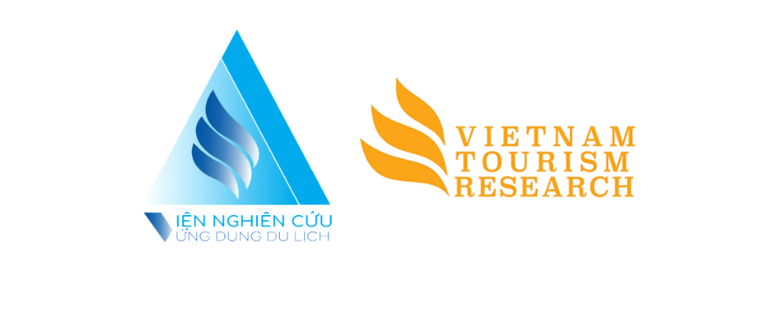This post is also available in:
Tiếng Việt (Vietnamese)
The COVID-19 pandemic has created an unprecedented crisis for the global tourism industry, causing extensive economic and social damage. This article provides an in-depth analysis of the strategic challenges and core principles for rebuilding destination brands in the post-pandemic era.
Drawing on practical research and expert symposia, the article proposes sustainable recovery strategies built around four pillars: health safety, data-driven targeted marketing, interregional cooperation, and operational innovation. In doing so, it offers both theoretical and practical foundations for localities, nations, and businesses to reposition their tourism image in the “new normal.”
Crisis Context and the Imperative to Redefine Destination Brands
Prior to 2020, tourism was one of the world’s largest economic drivers, generating more than USD 5.5 trillion in annual revenue and supporting hundreds of millions of jobs. However, the COVID-19 pandemic exposed a fundamental vulnerability of the sector: its high susceptibility to epidemiological disruptions. Tourism—predicated on mobility and contact—became a vector for virus transmission, leading to its global paralysis.
Alongside economic losses, the pandemic shook the foundation of trust—a critical factor in consumers’ travel decisions. In this context, destination branding was no longer a mere marketing activity but an existential strategy for tourism-dependent countries and regions. The symposium “Place Branding: Attracting Tourism in a Post-COVID-19 Environment,” led by APCO Worldwide, highlighted practical perspectives on the challenges, opportunities, and solutions that the industry must consider during the recovery phase.
Challenges for Destination Brands in the Post-COVID-19 Period
The first and most evident challenge is the severe economic downturn, which directly affects the operational capacity of the tourism ecosystem. Many hotels, airlines, and restaurants were forced to close temporarily or permanently, resulting in millions of job losses. In Newport Beach, hotel occupancy dropped from 70–90% to just 29% within the first few weeks of the pandemic—an illustrative example of this collapse.
Next is the widespread fear in traveler psychology, particularly before widespread vaccine availability and amid ongoing debates on herd immunity. Trust—a key component of destination branding—was severely eroded. Consumers became more cautious, prioritizing personal safety and preferring short, self-guided, nearby trips over distant and complex itineraries.
The third challenge concerns reputation. Locations with negative pre-pandemic images—due to high crime rates, corruption, or weak healthcare systems—face greater difficulty rebuilding their destination brands. Meanwhile, governments’ responses during the crisis will be remembered by the international community, influencing brand perception in the long term.
The tourism sector is also entering an intensely competitive phase. Following an initial period of solidarity, destinations will resume their race to attract visitors amid drastically reduced demand. In the United States, it is projected that tourist arrivals may decline by up to 50% in the early recovery years.
Another significant challenge is the reduction of marketing budgets. In economic crises, policymakers typically cut non-essential spending, including tourism promotion. However, this is at odds with the urgent need to restore destination branding amid fierce competition and rapidly shifting consumer sentiments.
Finally, inconsistent international safety standards have caused confusion among travelers. With each country or territory setting different rules for distancing, testing, and vaccination, planning travel has become more complex, reducing motivation to explore new destinations.
Principles and Strategies for Rebuilding Destination Brands
In the post-COVID-19 context, destination brand recovery strategies must begin with ensuring and communicating health safety. This is not merely a public health priority but the foundation for restoring traveler trust. Strengthening sanitation personnel, installing temperature control technologies, and transparent health governance are not only effective disease control measures but also symbolic demonstrations of a destination’s responsibility and capability.
The next step is repositioning destination brands through micro-marketing campaigns and targeted outreach. Instead of mass promotion, destinations must focus on specific segments, such as domestic car travelers, families, or nearby markets with early recovery potential. Data must be central to all marketing decisions—from tracking search trends to analyzing social media content.
Flexibility in booking and refund policies is also essential to rebuilding destination brands. Offering pre-booking incentives along with commitments to flexible changes in case of outbreaks will increase travelers’ sense of control and peace of mind.
In addition, multilevel cooperation among localities, businesses, and nations is a prerequisite for large-scale recovery. Interregional and interprovincial tourism models that connect local products with regional experiences will yield strong outcomes in both communication and operations. The private sector—with its faster pace of innovation and response—must be fully leveraged to set new safety standards and support the digitalization of small businesses.
Finally, product innovation and operational model transformation are critical to helping destination brands not just survive but thrive in the new reality. Sustainable tourism products tied to local cultural experiences or safe natural environments will dominate in the coming period. Integrating digital technologies, sharing platforms (gig economy), and virtual experiences will no longer be trends but survival imperatives.
Lessons from Leading Destination Brands
Israel serves as a successful example of destination brand recovery through government air travel subsidies and highly targeted micro-marketing campaigns. Meanwhile, Dallas has leveraged its event infrastructure to attract business travelers, with a clear focus on increasing overnight stays. Newport Beach, despite being heavily impacted, maintained its promotional budget and focused on nearby and high-end markets—demonstrating the importance of consistent marketing strategies. Notably, in Mexico, where national tourism promotion funding was entirely cut, the private sector stepped in to sustain the destination brand through digital strategies, emotional marketing, and social listening.
Tourism recovery in the post-COVID-19 environment is not merely a return to a “previous state,” but a comprehensive process of regeneration. Destination branding in this new era cannot rely solely on landscapes, culture, or services—it must reflect commitments to safety, empathy for travelers, and adaptive flexibility. Destinations must act as conscious brands—listening, adapting, and proactively guiding traveler sentiment on a renewed journey of discovery.











